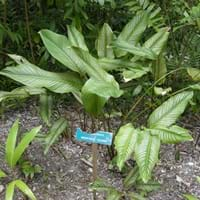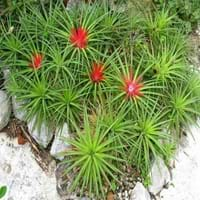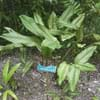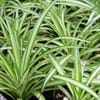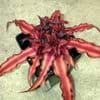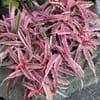Life Span
Perennial
Perennial
Type
Tender Perennial
Tender Perennial
Origin
Central America, South America
North America, Mexico, Latin America and the Caribbean, Caribbean, Central America, South America
Types
Not Available
Not Available
Habitat
Lowland evergreen rainforest, Subtropical forests
Terrestrial
USDA Hardiness Zone
Not Available
9-11
AHS Heat Zone
12-1
Not Available
Sunset Zone
H2
Not Available
Habit
Not Available
Upright/Erect
Minimum Height
Not Available
Minimum Width
Not Available
Flower Color
Not Available
Reddish Plum
Flower Color Modifier
Bicolor
Bicolor
Fruit Color
Not Available
Yellow
Leaf Color in Spring
Not Available
Dark Green
Leaf Color in Summer
Not Available
Dark Green
Leaf Color in Fall
Not Available
Dark Green
Leaf Color in Winter
Light Green
Light Green
Leaf Shape
Ovate elongated
Long Barbed
Plant Season
Spring, Summer, Fall, Winter
Spring, Summer, Fall, Winter
Sunlight
Partial Sun, Partial shade
Not Available
Growth Rate
Not Available
Not Available
Type of Soil
Loam, Sand
Not Available
The pH of Soil
Not Available
Not Available
Soil Drainage
Average
Not Available
Bloom Time
Indeterminate
Not Available
Repeat Bloomer
Not Available
Not Available
Tolerances
Drought
Drought
Where to Plant?
Container, Ground, Pot
Ground
How to Plant?
Cuttings, root cutting, Root Division
Leaf Cutting, Seedlings
Plant Maintenance
Medium
Low
Watering Requirements
Requires plenty of water during the growing season, Sprinkle water over foliage
Over-watering can cause leaf problems or root diseases, Water in morning to avoid prompting diseases
In Summer
Lots of watering
Lots of watering
In Spring
Moderate
Moderate
In Winter
Average Water
Average Water
Soil pH
Not Available
Not Available
Soil Type
Loam, Sand
Clay, Loam, Sand
Soil Drainage Capacity
Average
Not Available
Sun Exposure
Partial Sun, Partial shade
Not Available
Pruning
Remove damaged leaves, Remove dead branches, Remove dead leaves
Remove damaged leaves, Remove dead branches, Remove dead leaves
Fertilizers
All-Purpose Liquid Fertilizer
fertilize in growing season
Pests and Diseases
Mealy bugs, Spider mites
Fungal Diseases
Plant Tolerance
Drought
Drought
Flowers
Not Available
Yes
Flower Petal Number
Not Available
Not Available
Fragrant Flower
No
Not Available
Fragrant Fruit
No
Not Available
Fragrant Leaf
No
Not Available
Fragrant Bark/Stem
No
Not Available
Showy Foliage
Yes
Not Available
Showy Bark
No
Not Available
Foliage Texture
Coarse
Not Available
Foliage Sheen
Glossy
Not Available
Self-Sowing
Not Available
Not Available
Attracts
Ants, Aphids, Hummingbirds, Mealybugs, Spider Mites
Birds, Insects
Allergy
Not Available
Not Available
Aesthetic Uses
Showy Purposes, Used as an interior landscaping species
Borders, Ground Cover
Beauty Benefits
Not Available
Not Available
Environmental Uses
Air purification
Air purification
Medicinal Uses
anti-inflammatory, antimicrobial, Antioxidants, Antiviral
Cough
Part of Plant Used
Root
Fruits, Leaves
Other Uses
Air freshner, Container, Used for its medicinal properties
Fibre
Used As Indoor Plant
Yes
No
Used As Outdoor Plant
Yes
Yes
Garden Design
Container, Feature Plant, Houseplant, Tropical
Hedges
Botanical Name
CALATHEA ornata
BROMELIA
Common Name
Prayer Plant
Heart-of-Flame
In Hindi
Prayer plant
Heart-of-flame
In German
Maranta leuconeura
Herz -of -Flame
In French
Prayer plant
Coeur-de- flamme
In Spanish
maranta leuconeura
Corazón de la llama
In Greek
Prayer Plant
Καρδιά - of- Φλόγα
In Portuguese
Маранта
Coração -de- Chama
In Polish
Prayer plant
Heart- of- Płomień
In Latin
Prayer plant
Cor - de - flamma
Phylum
Vascular plant
Tracheophyta
Class
Liliopsida
Liliopsida
Order
Zingiberales
Poales
Family
Marantaceae
Bromeliaceae
Clade
Angiosperms, Commelinids, Monocots
Angiosperms, Commelinids, Monocots
Tribe
Not Applicable
Not Available
Subfamily
Not Applicable
Bromelioideae
Difference Between Prayer Plant and Heart of Flame
If you are confused whether Prayer Plant or Heart of Flame are same, here are some features about those plants to help you choose better. Many people think that these two plants have the same characteristics, but one can see Prayer Plant and Heart of Flame Information and learn more about it. Fertilizers required for proper growth of Prayer Plant are All-Purpose Liquid Fertilizer, whereas for Heart of Flame fertilizers required are fertilize in growing season. Hence, one should know the basic difference between Prayer Plant and Heart of Flame if you are planning to have them in your garden to enhance its beauty.
<
Flowering PlantsImportance of Prayer Plant and Heart of Flame
Want to have the most appropriate plant for your garden? You might want to know the importance of Prayer Plant and Heart of Flame. Basically, these two plants vary in many aspects. Compare Prayer Plant and Heart of Flame as they differ in many characteristics such as their life, care, benefits, facts, etc. Every gardener must at least have the slightest clue about the plants he wants to plant in his garden. Compare their benefits, which differ in many ways like facts and uses. The medicinal use of Prayer Plant is anti-inflammatory, antimicrobial, Antioxidants and Antiviral whereas of Heart of Flame is Cough. Prayer Plant has beauty benefits as follows: Not Available while Heart of Flame has beauty benefits as follows: Not Available.
Compare Facts of Prayer Plant vs Heart of Flame
How to choose the best garden plant for your garden depending upon its facts? Here garden plant comparison will help you to solve this query. Compare the facts of Prayer Plant vs Heart of Flame and know which one to choose. As garden plants have benefits and other uses, allergy is also a major drawback of plants for some people. Allergic reactions of Prayer Plant are Not Available whereas of Heart of Flame have Not Available respectively. Having a fruit bearing plant in your garden can be a plus point of your garden. Prayer Plant has no showy fruits and Heart of Flame has showy fruits. Also Prayer Plant is not flowering and Heart of Flame is flowering. You can compare Prayer Plant and Heart of Flame facts and facts of other plants too.
